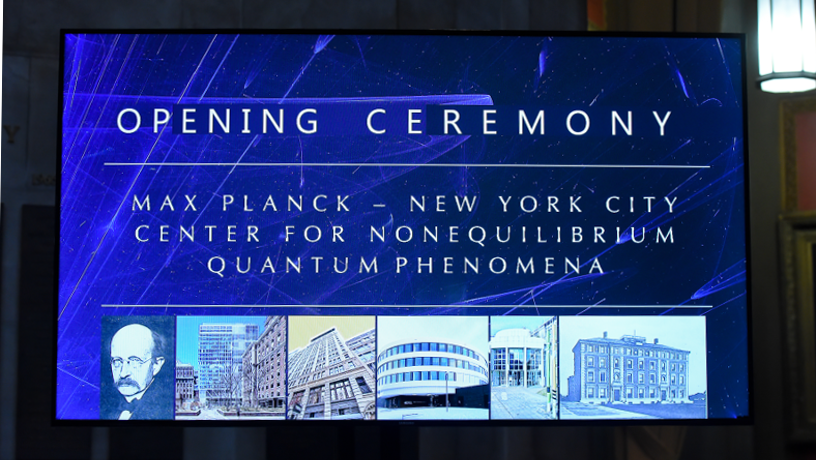2019: A Year In Review

Our researchers and their high-impact work made the covers of many journals this year.
Guided by our vision, Columbia Engineering for Humanity, our researchers tackle the grandest challenges—working daily to create a more secure, connected, healthy, sustainable and creative world.
2019 was no exception. In everything from neuroscience to climate change, our faculty and students contributed breakthroughs and major advancements that will shape 2020 and beyond. Here’s just a snapshot of their many accomplishments.
Climate Change Tipping Point Could Be Sooner than We Think
A new study from Pierre Gentine, associate professor of earth and environmental engineering, shows that vegetation may not be able to continue abating the effects of emissions from human activities.
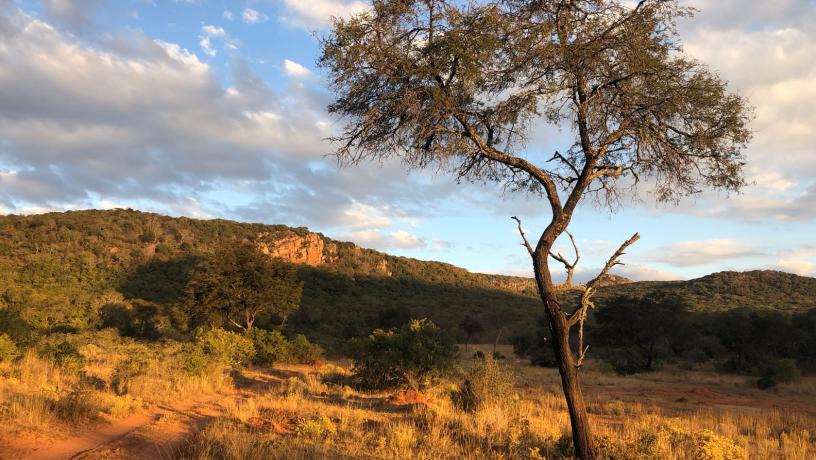
A Step Closer to Self-Aware Machines
Columbia Engineering researchers led by Hod Lipson, James and Sally Scapa Professor of Innovation, have made a major advance in robotics by creating a robot that learns what it is, from scratch, with zero prior knowledge of physics, geometry, or motor dynamics.
After a brief period of “babbling,” and within about a day of intensive computing, the robot creates a self-simulation, which it can then use to contemplate and adapt to different situations, handling new tasks as well as detecting and repairing damage in its body.
Celebrating Women in Tech
VEON CEO Ursula Burns '82 returned to campus as part of a special night launching the New York City Women in Tech initiative. Burns joined Dean Boyce for a wide-ranging and thought-provoking conversation moderated by Bloomberg business editor Janet Paskin.
Watch excerpts from Ursula Burns's conversation with Dean Boyce.
Defying the Laws of Physics?
A discovery by Chris Boyce, assistant professor of chemical engineering, explains a new family of gravitational instabilities in granular particles of different densities that are driven by a gas-channeling mechanism not seen in fluids.
Formation of lava-lamp like structures and "bubbles" of lighter sand and breakup of a "droplet" of heavier sand.
Radical Desalination Approach May Disrupt Water Industry
Ngai Yin Yip, assistant professor of earth and environmental engineering, designed a new desalination method for hypersaline brines that is low-cost, efficient, and effective. It could address growing water challenges across the globe.
A New Paradigm for Desalination
Faculty Awards and Honors
Our faculty were honored by a number of prestigious organizations.
- Gordana Vunjak-Novakovic and Kathy McKeown were elected to the American Academy of Arts and Sciences
- Michal Lipson was elected to the National Academy of Sciences and received the Comstock Award in Physics
- Kristin Myers received a Presidential Early Career Award
- Christos Papadimitriou won the Harvey Prize
- A record ten faculty members won National Science Foundation CAREER Awards
- Yannis Tsvidis was elected to the National Academy of Engineering
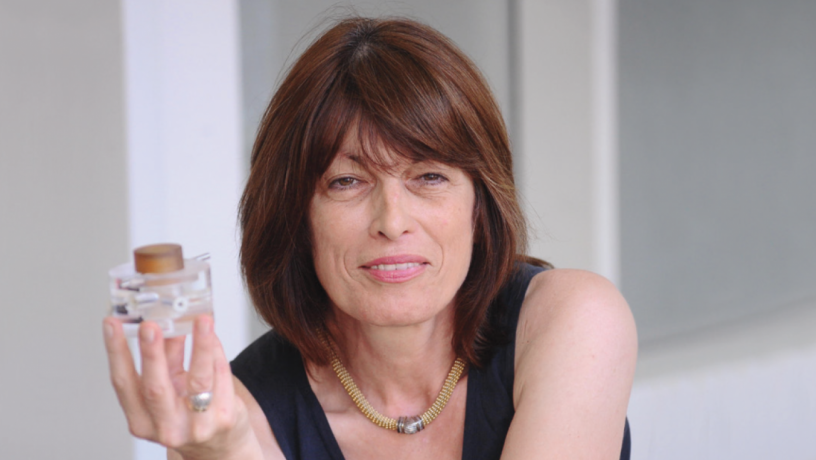
Gordana Vunjak-Novakovic, University Professor and The Mikati Foundation Professor of Biomedical Engineering and Professor of Medical Sciences
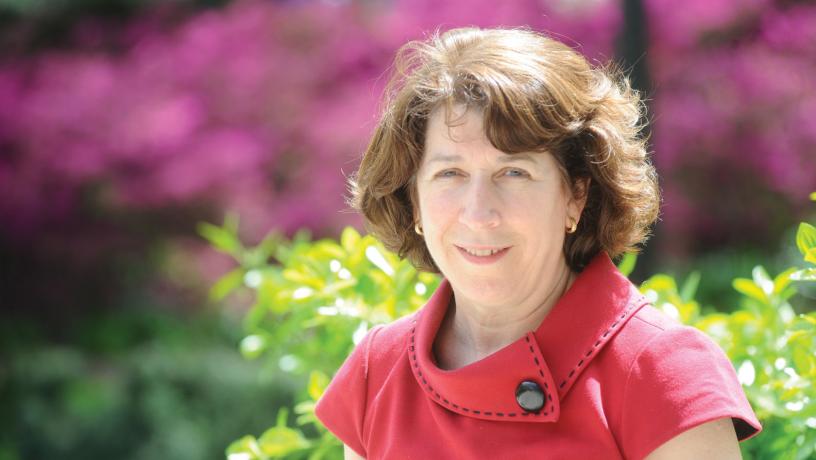
Kathy McKeown, Henry and Gertrude Rothschild Professor of Computer Science
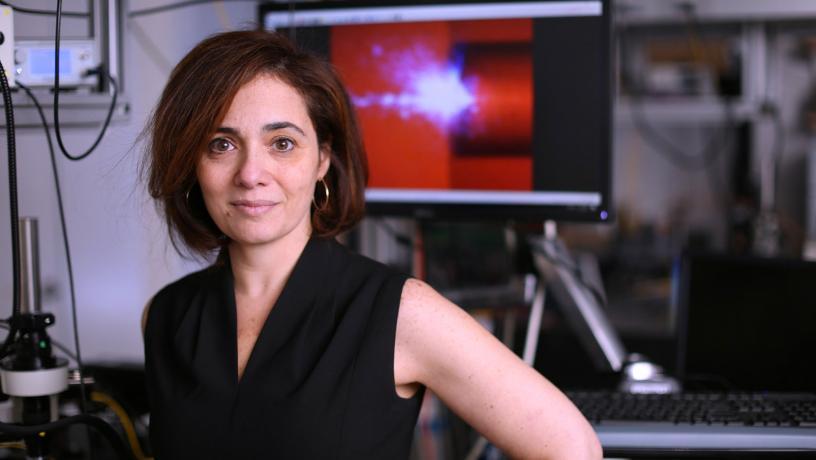
Michal Lipson, Eugene Higgins Professor of Electrical Engineering and professor of applied physics
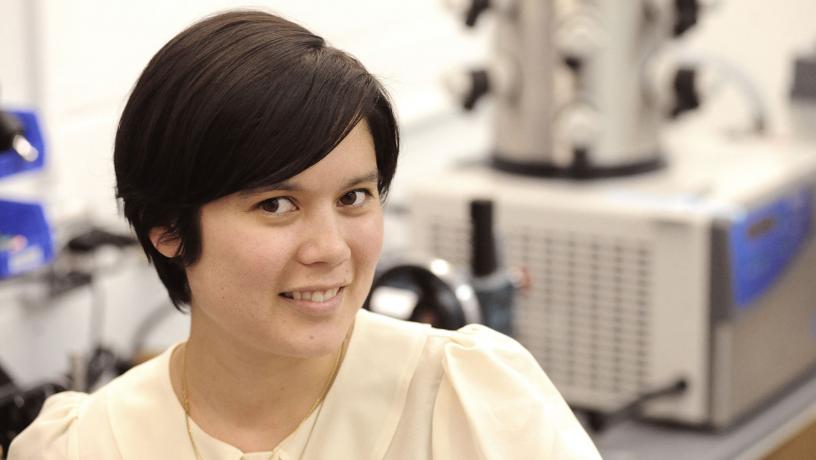
Kristin Myers, associate professor of mechanical engineering
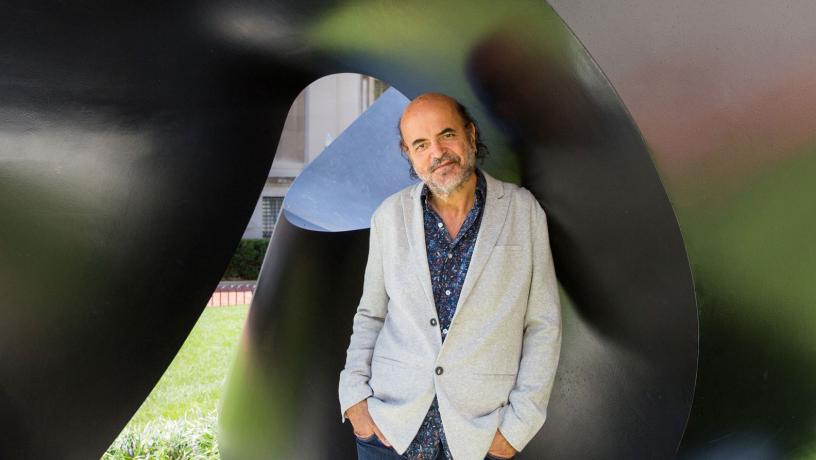
Christos Papadimitriou, The Donovan Family Professor of Computer Science
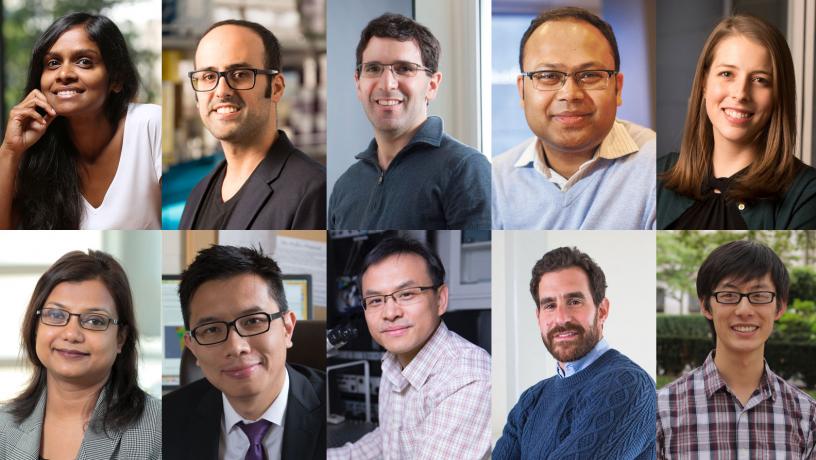
Our 2019 NSF CAREER Award Winners. Top row: Shipra Agrawal, Tal Danino, Josuha Jacobs, Suman Jana, Allie Obermeyer. Bottom row: Baishaki Ray, Steve WaiChing Sun, Qi Wang, Omri Weinstein, Eugene Wu.
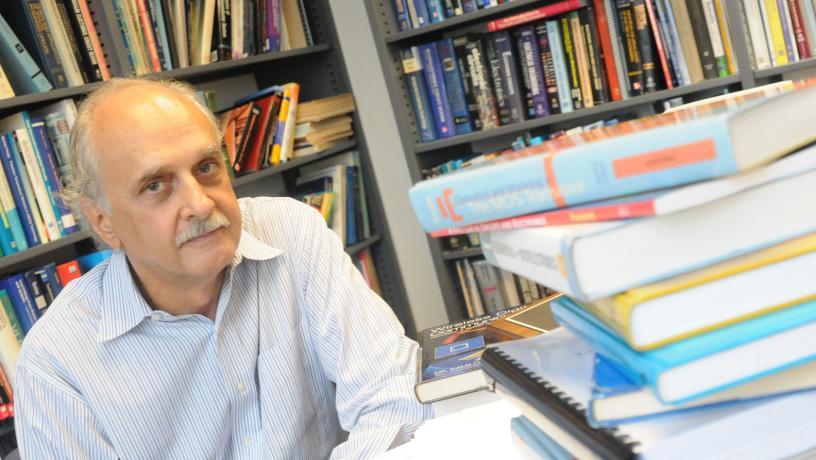
Yannis Tsividis, Edwin Howard Armstrong Professor of Electrical Engineering
Outstanding Student Achievements
Columbia Engineering senior Amar Bhardwaj was selected to receive the highly prestigious Marshall Scholarship, which supports up to 50 top young scholars from the United States to pursue graduate study at colleges and universities across the United Kingdom.
Additionally, PhD candidate Jyotirmoy Mandal was selected as a Schmidt Science Fellow, an innovative post-doctoral program focused on developing the “next generation of interdisciplinary science leaders to tackle the world’s most significant problems and maximize scientific opportunities for society.”
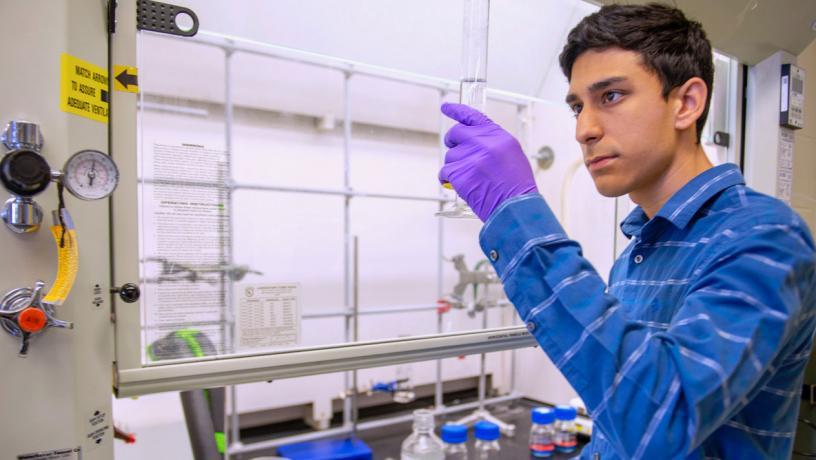
Chemical Engineering senior Amar Bhardwaj
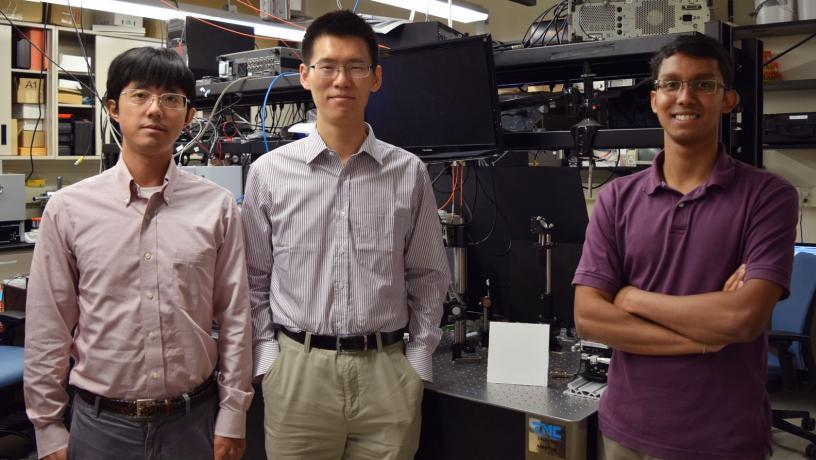
From left: Nanfang Yu, Yuan Yang, and Jyotirmoy Mandal
A Trojan Horse for Cancer Immunotherapy
A team led by Tal Danino from biomedical engineering engineered a “Trojan horse” bacteria for cancer immunotherapy. In mice, it not only cleared solid tumors, but also treated distant tumors that were not injected.
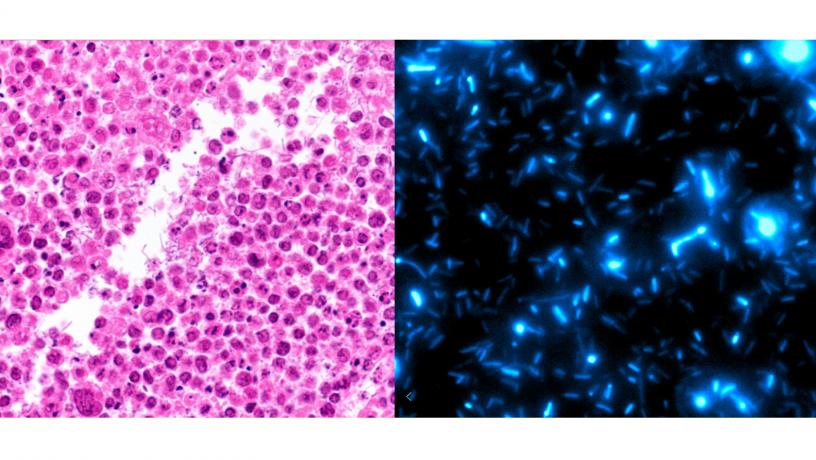
Histology image of bacteria growing within necrotic regions of lymphoma tumors (LEFT). Bacteria are programmed to undergo waves of growth and self-destruction leading to immunotherapeutic release (RIGHT).
Robotic Cane Improves Stability in Walking
A team led by Sunil Agrawal, professor of mechanical engineering and of rehabilitation and regenerative medicine, demonstrated for the first time the benefit of using an autonomous robot that “walks” alongside a person to provide light-touch support, much as one might lightly touch a companion’s arm or sleeve to maintain balance while walking.
Demonstration of a robotic cane.
Answer: Avi Gupta
Question: Who is our Class of 2023 President, Jeopardy! champion and budding philanthropist?
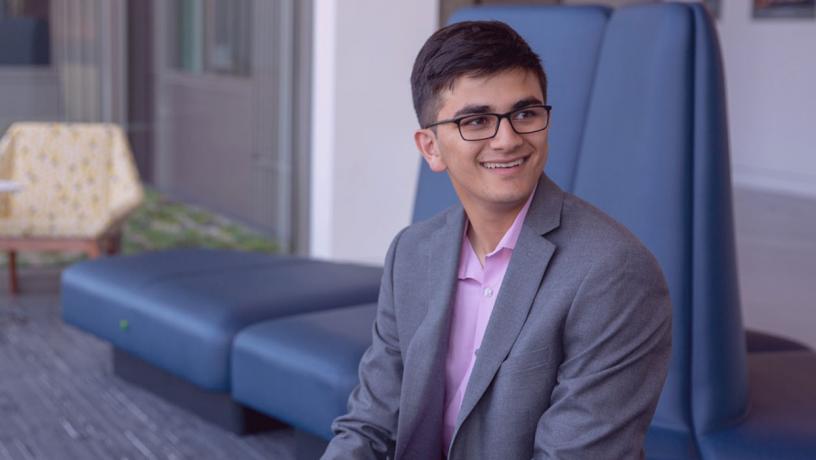
New Test Diagnoses Lyme Disease Within 15 Minutes
A team led by Sam Sia, professor of biomedical engineering, has developed a rapid microfluidic test that can detect Lyme disease with similar performance as the standared two-tiered approach in just 15 minutes.
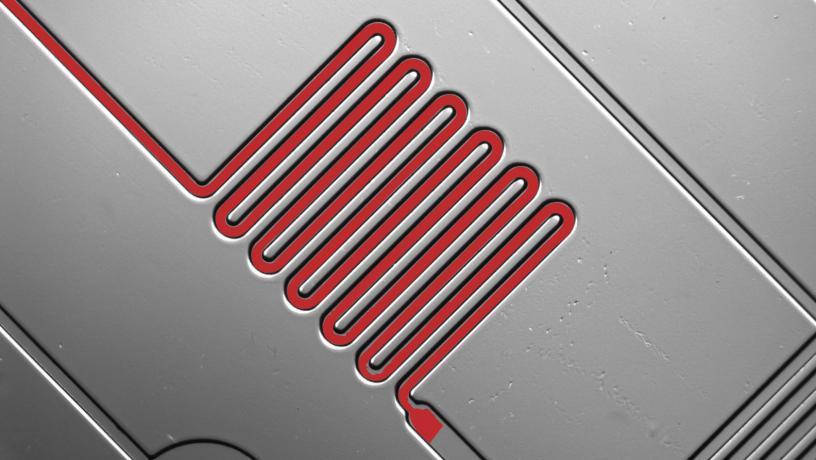
Engineered Structures And Properties
From Columbia Engineering Magazine: Materials underpin modern society. They ensure water is potable, information flows freely, and new tools emerge for combating disease. They offer us a path to a sustainable future and the possibility of harnessing unprecedented computational power. Now, the field is on the verge of a transformative leap that could usher in a new age.
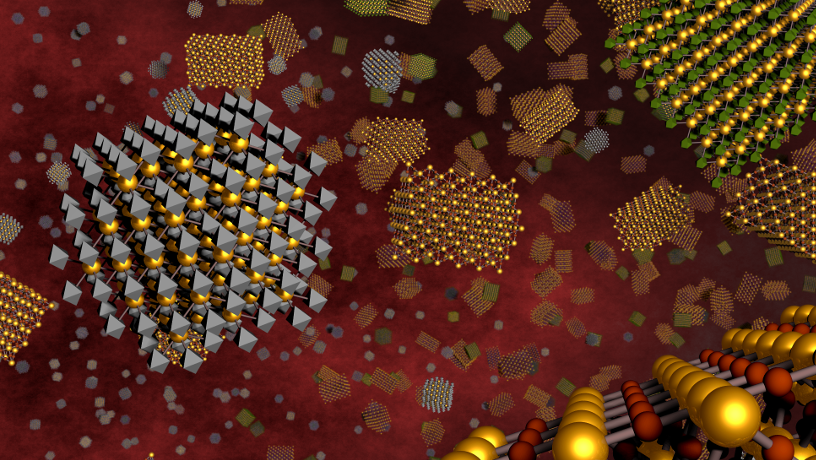
Quantum Leaps and Bounds
Columbia University, the Flatiron Institute, and the Max Planck Society for the Advancement of Science joined forces to establish the Center for Nonequilibrium Quantum Phenomena.
